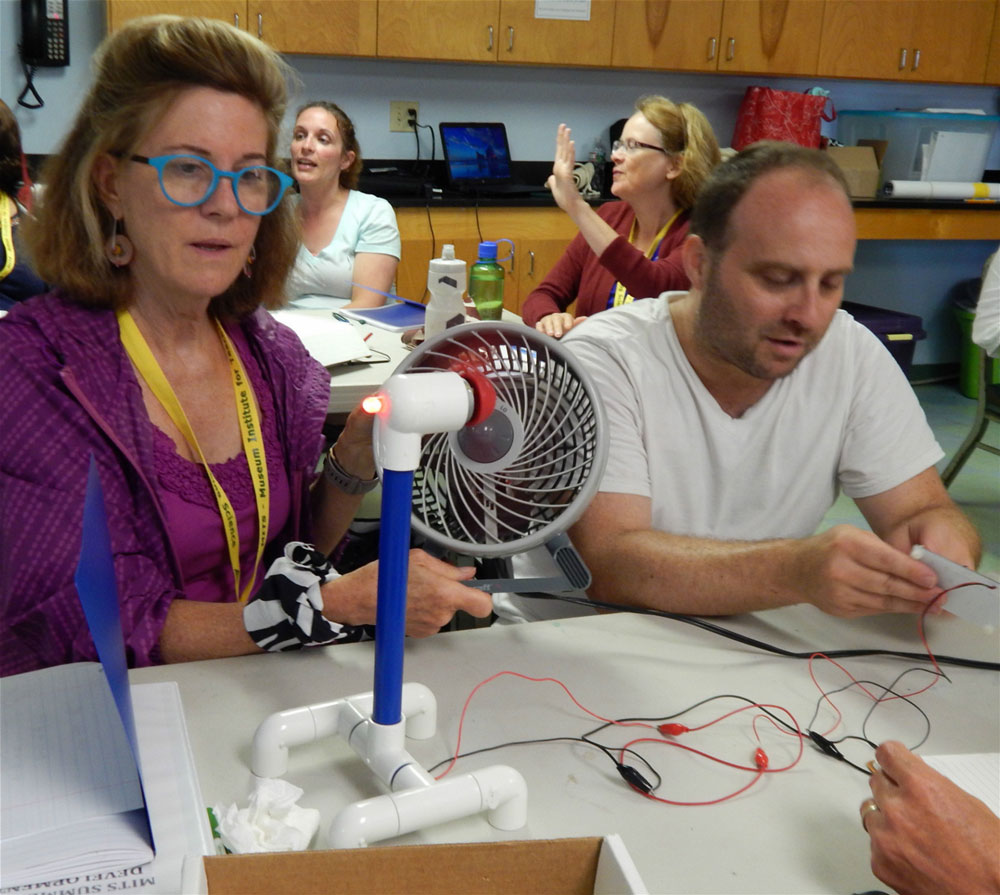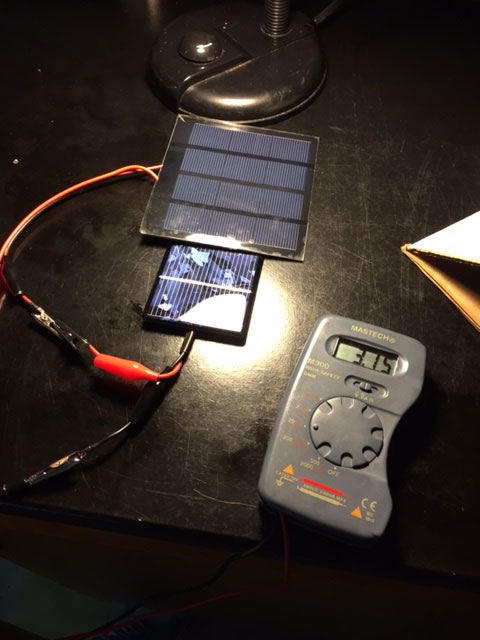Friday, September 29, 2017
For Immediate Release
Teachers Energize Their Curriculum During MITS Southeast Summer Institute
Dartmouth, MA – In the Southeast region of Massachusetts, grades 3-8 educators explored alternative energy sources, including wind and solar power,  through “hands-on, minds on” experiences. During Museum Institute for Teaching Science (MITS) Summer Professional Development Institute, “From Solar to Polar: Designing Sustainable Solutions,” educators made new connections between their curriculum and energy technologies.
through “hands-on, minds on” experiences. During Museum Institute for Teaching Science (MITS) Summer Professional Development Institute, “From Solar to Polar: Designing Sustainable Solutions,” educators made new connections between their curriculum and energy technologies.
Participants began their week-long investigation of energy at Massachusetts Maritime Academy where they toured a wind turbine and learned about sustainable building practices, including solar photovoltaic systems, a vertical-axis wind generator and geothermal power. Comparing renewable and nonrenewable energy sources, teachers considered the consequences of human energy consumption as they examined how fuel sources can contribute to environmental contamination and climate change. With guidance from Kathy Zagzebski, Executive Director at the National Marine Life Center, educators assessed the effects of human energy choices on wildlife by assuming the role of marine animal rehabilitators and performing a mock sea turtle rescue
At Battleship Cove, educators played a content-based game (an adaptation of Pitch It) and engaged in argument from  evidence as they “sold” biofuels to other groups (corn, algae, manure, soybeans, etc.), prompting energetic group discussions that reinforced their learning about the value of renewable resources. Participants also explored the self-contained energy systems aboard WWII ships, and compared modern and historic methods of energy production. With the 2016 revised Massachusetts Science and Technology/Engineering Curriculum Frameworks in mind, teachers brainstormed ways to incorporate engineering design into alternative energy projects with their students.
evidence as they “sold” biofuels to other groups (corn, algae, manure, soybeans, etc.), prompting energetic group discussions that reinforced their learning about the value of renewable resources. Participants also explored the self-contained energy systems aboard WWII ships, and compared modern and historic methods of energy production. With the 2016 revised Massachusetts Science and Technology/Engineering Curriculum Frameworks in mind, teachers brainstormed ways to incorporate engineering design into alternative energy projects with their students.
Seeking more resources, teachers took a trip to Round the Bend Farm, where they explored sustainable practices and engineering solutions to energy use problems. Educators were fascinated by the tiny houses, composting toilets and windmill on site. They discussed the agricultural techniques employed by the staff, including rotational grazing (livestock forage in a specific spot for a short time and then move on), growth of multiple types of crops (as opposed to monocropping), and transformation of waste products (even from the composting toilets) into safe, nutrient-rich fertilizer for the plants.
The teachers wrapped up their week at the Lloyd Center for the Environment, where they engineered solar powered fountains and crafted blades for  wind turbines, tweaking their designs for maximum efficiency. Through a “Survivor Challenge”, educators applied their knowledge of sustainable energy by designing engineering solutions to three challenges: move water, purify water, and power systems on a desert island. By participating in inquiry-based energy activities, educators gained first-hand experience using the Science and Engineering Practices while they shared ideas for classroom applications. These teachers have returned to their classrooms energized and ready to excite their students about sustainability, technology, engineering and math!
wind turbines, tweaking their designs for maximum efficiency. Through a “Survivor Challenge”, educators applied their knowledge of sustainable energy by designing engineering solutions to three challenges: move water, purify water, and power systems on a desert island. By participating in inquiry-based energy activities, educators gained first-hand experience using the Science and Engineering Practices while they shared ideas for classroom applications. These teachers have returned to their classrooms energized and ready to excite their students about sustainability, technology, engineering and math!
“This was time well spent. It was exactly what I needed to get me thinking more about inquiry-based learning, and it helped me to be a more effective team leader.” – teacher participant
###
The Museum Institute for Teaching Science specializes in providing hands-on, minds-on, inquiry-based STEM professional development for formal and informal educators. For more information, visit www.mits.org or call 617-328-1515.
